Why I Had to Leave the Democratic Party
Timothy Canova on Challenging Democratic Establishment's Debbie Wasserman Schultz
By Timothy A. Canova, Special to The Kennedy Beacon
When Robert F. Kennedy Jr. decided to run for president as a Democrat, many of us who have challenged the Party establishment in the past fully expected the Democratic National Committee (DNC) to rig the primary process against him. My own experience revealed many of the roadblocks the establishment uses on a regular basis against their own grassroots.
In 2016, I challenged my local Congresswoman, Debbie Wasserman Schultz, in a Democratic primary election for her House seat. As a tenured law professor at Nova Southeastern University in Fort Lauderdale, the only law school in her district, I was well aware that as chair of the DNC, Wasserman Schultz was making herself toxic among grassroot voters by helping to rig the primaries against Senator Bernie Sanders on behalf of Hillary Clinton.
When Kennedy testified in July about federal government collusion with Big Tech companies to censor speech before a House Judiciary Select Subcommittee hearing on government censorship, it was Wasserman Schultz who tried to censor Kennedy at the hearing. Her resolution was voted down.
In 2016, Wasserman Schultz had reason to worry about a challenger. She had tied herself to predatory corporate interests, from payday lenders and Wall Street banks to Big Pharma and private prison companies, while also backing unpopular Obama administration policies like the Trans-Pacific Partnership (TPP) and the one-sided Iran nuclear deal.
My campaign went viral from the start, and by the end eight months later, I had raised $3.8 million, all in small online donations, from more than 209,000 individual donations averaging $17 each, a record at the time for the highest percentage of small online donations for any campaign for a federal office. Fully 76% of our funding came from online donations of $200 or less, and we took not a penny in corporate PAC money.
Political consultants came out of the woodwork urging me to spend on their services. But I was modeling my campaign on the late great progressive U.S. Senator Paul Wellstone’s first breakthrough campaign. With all the money we were raising, I built a grassroots army of hundreds of field organizers and volunteers to knock on more than 12,000 doors a week throughout the summer of 2016. We had volunteers and billboards in every corner of the district and opened an unheard-of four field offices, including in my hometown of Hollywood, as well as Pembroke Pines, Plantation, and then in Wasserman Schultz’s home base of Weston.
Early in the campaign, one mainstream poll had Wasserman Schultz ahead by 13 points, with many undecideds. Her disapproval numbers were high and rising fast. Meanwhile, our own poll showed her lead in single digits, with one in five likely voters still undecided.
Then, in mid-May, I received an unexpected and unsolicited endorsement from Bernie Sanders. When news of Sanders’ endorsement spread through social media, small donations surged. Without even sending out a fundraising email, we raised a quarter million dollars that day in small online donations.
By the summer, Sanders was out of the race, but the Democratic National Convention was marred by the DNC Wikileaks revelations that Wasserman Schultz had worked hard to smear Sanders and rig the primary schedule and party machinery for Clinton. The leaked DNC emails also revealed that Wasserman Schultz was using the DNC to surveil and undermine my campaign, both within the party and with her big media allies. On the first day of the Convention, she was forced to resign in disgrace as the DNC chair.
Wasserman Schultz now turned her attention to keeping her House seat by hook or by crook. She received a tepid endorsement from President Obama. It soon became clear that I was being shadow banned on social media and throttled by Big Tech giants, making me perhaps the first Congressional candidate to be on the receiving end of such a coordinated attack.
In the final weeks, our campaign website and fundraising platform came under repeated Denial of Service (DOS) attacks, disrupting our fundraising. Our lawyers contacted the Federal Bureau of Investigation, but the FBI did nothing and would not even return our calls. Meanwhile, our fundraising emails were somehow being directed into people’s Spam boxes. White vans were seen driving around the district pulling up our lawn signs, while our field organizers and volunteers were harassed by local police.
Wasserman Schultz, like many incumbents, had a built-in advantage in the vote-by-mail since the party had placed its “mules” within the nursing homes and senior citizen centers throughout the district. We knew we would have to overcome that advantage in the 10-day early voting period and on primary election day. But the momentum was clearly on our side. Wasserman Schultz, afraid of her own constituents, dodged debates for months and even stayed away from the annual July 4th parade in Weston. Her campaign spent millions on political consultants but had hardly a footprint on the ground.
In contrast, our huge door-to-door canvassing efforts were making all the difference. Our canvassers entered data on every voter engagement into the voter database on their smartphones, ranking each engagement on a 5-point scale reflecting the voter’s level of support for each candidate. And they returned to each door several times throughout the hot summer. Those thousands of entries created a far larger statistical sampling size than establishment voter surveys based on a few hundred supposedly random telephone calls.
According to our field numbers, we reached a tipping point in the early summer and started to pull ahead of Wasserman Schultz. By the start of early voting, we were ahead by more than enough to overcome Wasserman Schultz’s vote-by-mail advantage.
By the time of the August 30th Primary Election Day, our field numbers showed that those who were strongly or leaning toward Canova outnumbered Wasserman Schultz supporters by an astounding margin of more than 4 to 1. Wasserman Schultz could have gotten every undecided voter and we still would have won.
But a funny thing happened the day before the primary. The local NBC-6 television station had a preview of the next day’s primaries posted on its website. All the other races, from county commissioners to sheriff, were zeroed out, reflecting that no votes had yet been counted. But for Florida’s 23rd Congressional District, the NBC website showed that Wasserman Schultz was leading me by 16 percentage points (58% to 42%) with 69% of the precincts reporting. We took screen shots and called NBC6. They took down the bogus results but provided no explanation.
The next day was the Primary Election Day and once again we had a commanding presence across the district. The polls closed on election night and almost immediately the establishment media reported that Wasserman Schultz was the projected winner by about the same margin as had been “mistakenly” reported a day earlier on the NBC website. I was naturally suspicious and asked my election lawyer and experienced election observers if the software of the electronic voting machines could be rigged. No one wanted to believe this was possible, including me.
I had too many questions to concede, even though Democrat Party leaders offered to make me the Stacy Abrams of Florida if I did. Over the next several days, we received calls from Broward voters who reported seeing my vote totals decline on TV as more votes were counted. I was also contacted by numerous election experts who had analyzed our election results and raised concerns about mathematical anomalies in the official results that they claimed could only be explained by either hacking or insider manipulation of the election systems software. Similar anomalies were found in several of Bernie Sanders’ suspicious primary losses to Hillary Clinton.
I am not a computer expert or statistician. So I thought the best way to verify the election results and put these rumors to rest was to make a public records request to inspect the paper ballots cast, as was my right under the Florida Constitution and state statutes. In response, I was initially informed by Brenda Snipes, the Broward Supervisor of Elections, that they had not maintained copies of any digital scanned images of the ballots even though the ballots were all scanned to electronically tabulate the votes. Their failure to keep the digital scanned images for 22 months was a clear violation of state and federal law, punishable as crimes.
After months of obstruction, I finally filed suit in June of 2017 in Florida's 17th Circuit Judicial Court. It was clear that Wasserman Schultz herself was trying to block our ballot inspection, as we discovered when Snipes’ attorney offered to provide the court with a sworn affidavit from Wasserman Schultz with a bogus claim that I was seeking to inspect the ballots for an improper purpose, an offer the court swiftly declined.
Three days after serving our pre-trial discovery demands for the paper ballots, Snipes signed an order, carried out immediately, to destroy all of the ballots cast in our August 30th, 2016 primary. And in signing that order, she falsely certified that the ballots were not the subject of pending litigation. Snipes and her attorney then concealed the ballot destruction from the court and from me and my attorneys for another two months, evidence of Snipes’ willful obstruction and the criminal intent required under state and federal statutes.
Even after admitting to the illegal ballot destruction, first in open court and then in sworn videotaped deposition testimony, Snipes continued to litigate for months, using taxpayer funds to bleed my campaign. To add insult to injury, Snipes eventually claimed that her office had digital scanned ballot images after all, which we then inspected in a few precincts and found some discrepancies, all the while doubting their authenticity since computer experts can easily manipulate and produce doctored digital images.
In May 2018, Judge Raag Singhal finally put an end to the charade and granted my motion for summary judgment. His 10-page order recounted the list of legal violations by Broward election officials in destroying the paper ballots, including felonies punishable by up to 5 years in prison for each violation. But at the end of the day our only relief was a settlement of attorney’s fees at taxpayer expense.
The paper ballots were gone and there would never be any way to conclusively verify the suspicious election results.
We now hoped that Judge Singhal’s findings of criminal violations would open the floodgates and lead to law enforcement agencies stepping in to investigate and clean up the presumed corruption in our voting system. After all, we had sworn videotaped confessions and a Florida court finding. We were handing prosecutors an easy case on a silver platter that any second year law student could successfully prosecute.
But our hopes were soon disappointed. The Acting US Attorney Benjamin Greenberg was initially interested, but after a week of meetings at the Department of Justice in Washington, DC, he returned with news that there would be no federal investigation. Apparently, that was stopped by Rod Rosenstein, the same Deputy Attorney General who had appointed Robert Mueller to investigate President Trump for alleged collusion with Russia when all the evidence suggested it was Wasserman Schultz’s DNC and Hillary Clinton campaign that had colluded with Russians and other foreign intelligence agencies in paying for the fraudulent Steele dossier.
We also hit a brick wall with the Florida Department of Law Enforcement under then Governor Rick Scott. My election lawyer was told that Scott was afraid to prosecute Snipes for reasons of identity politics since she was an elderly black woman and Scott was running for the US Senate. We doubted this excuse since replacing Snipes with an honest and competent black woman was apparently rejected as an option. No, it was something more. Even the Broward Republicans had fallen silent after years of calling for Snipes’ removal.
A Republican election lawyer finally reported back to me that no Florida Republicans would step up because they had the same friends as Wasserman Schultz, by which he meant they have the same corporate financial backers, lobbyists, and even political consultants. The “uniparty” was closing ranks to protect one of their own from an outsider grassroots candidate without corporate backers, lobbyists and political consultants to protect him.
Finally, our attempts to challenge the election results in the House of Representatives were met by complete silence from Democrat and Republican members alike, and the House Committee for Administration never so much as acknowledged receiving our complaint.
Running within the Democratic Party against an entrenched incumbent revealed the establishment’s commitment to win at all costs, even if that meant lying, cheating, rigging, and covering up the crimes of election officials. It also demonstrated the range of techniques deployed to rig election outcomes, including the corruption of election officials, their dependence on “black box” electronic voting machines dominated by a shadowy hedge fund cartel, the cynical use of identity politics, the weaponization of the mass media and Big Tech, and the politicization of law enforcement agencies.
It was at this moment of frustration that I decided to finally “walk away” from the Democratic Party that I had voted for regularly my entire life, and to run again, but this time as an independent.
In Part 2, I will discuss the particular challenges and frauds I encountered when running as an independent in my rematch against Wasserman Schultz—the kinds of challenges that today’s Kennedy campaign will need to overcome should Kennedy decide to run for President in 2024 as an independent.
Timothy A. Canova is a Professor of Law and Public Finance at the Nova Southeastern University Shepard Broad College of Law in Ft. Lauderdale, Florida, and can be reached at tim@timcanova.com


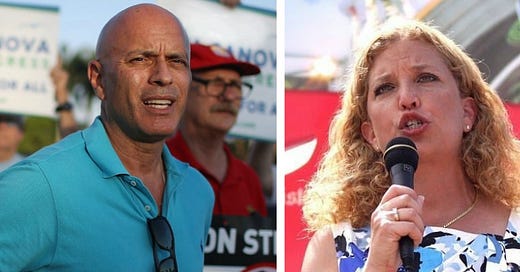



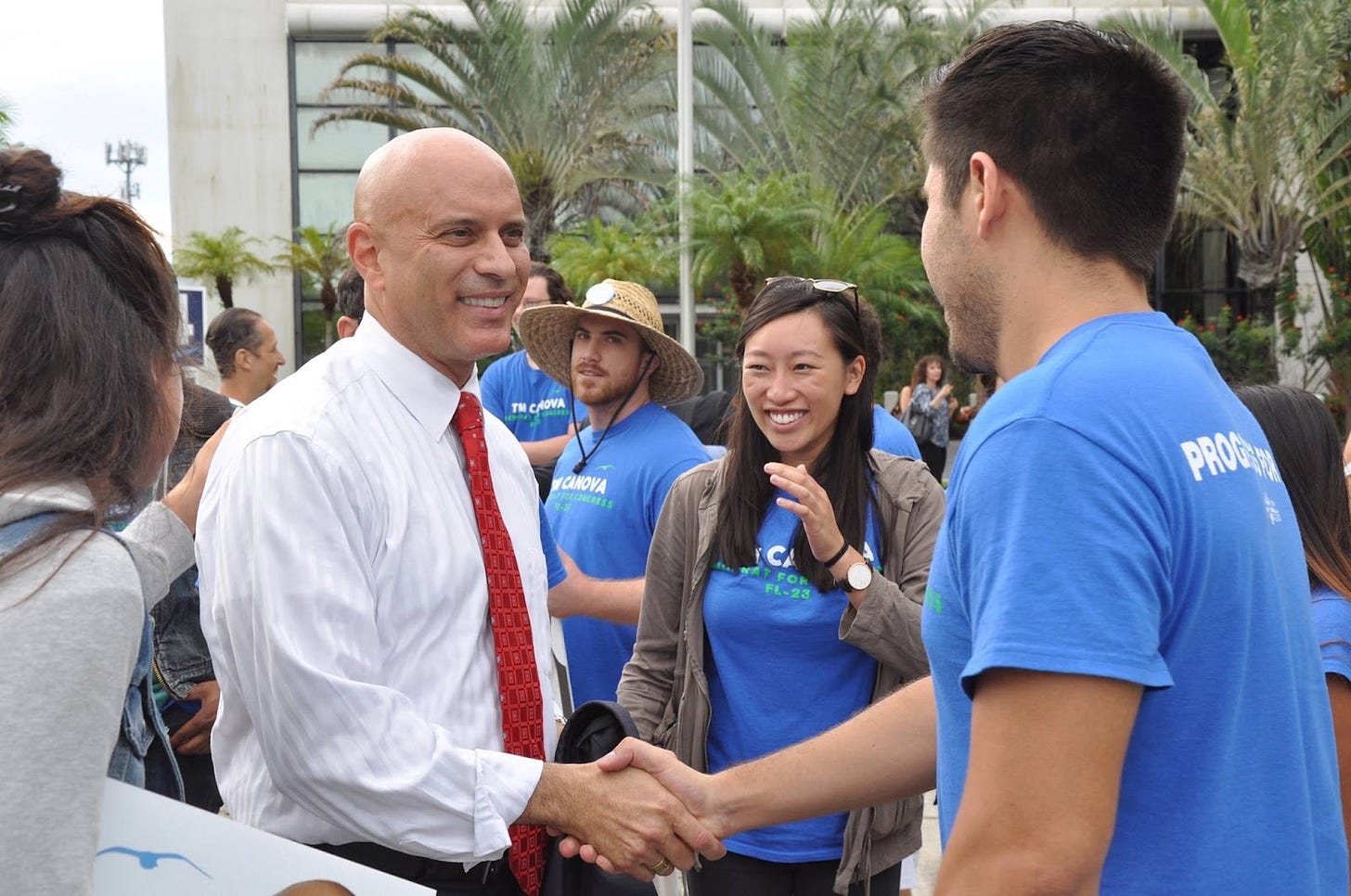
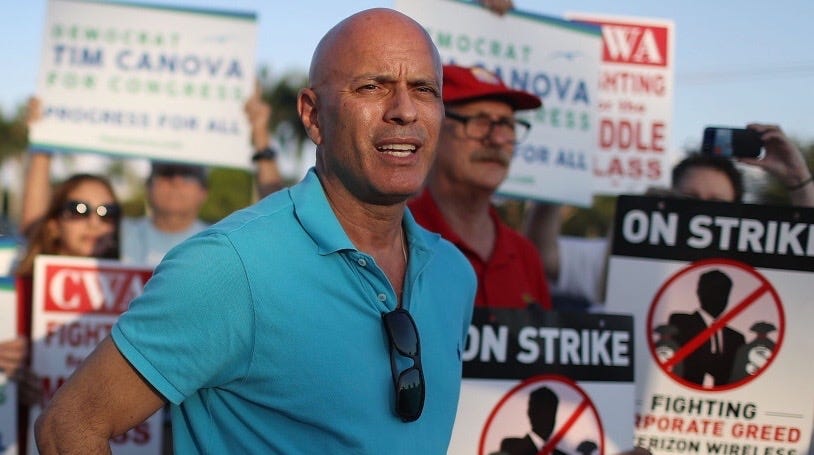
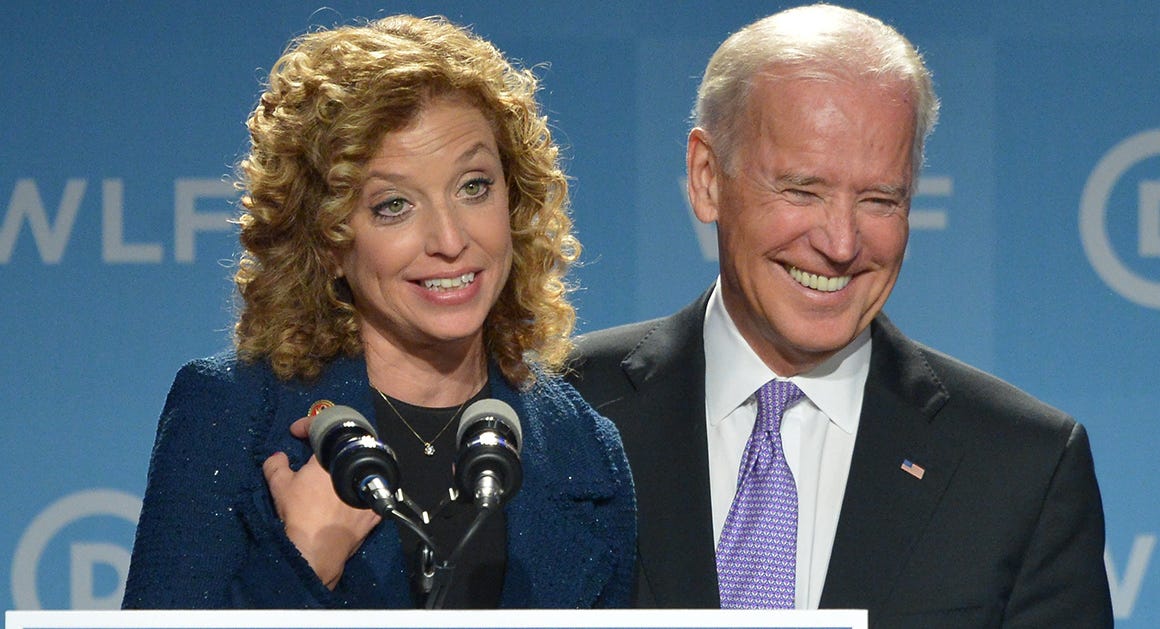
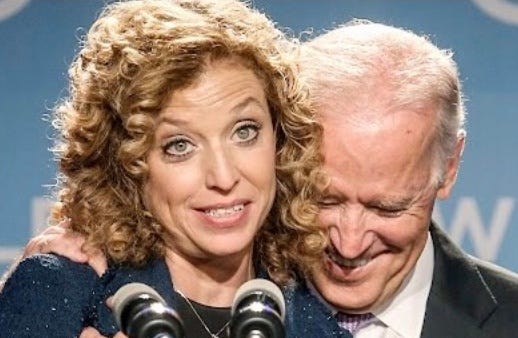
The BEST explanation of election rigging I’ve come across. Kudos for bringing real light to a shadowy world. God help us.
Wow. Just plain wow. I am reading Whittaker Chambers, "Witness," and learning that (1) the disinformation wall of sound from our government and press has been going on a long time and (2) one man can make a difference. Malraux wrote to Chambers after reading his book that at least he did not come back from hell empty-handed.